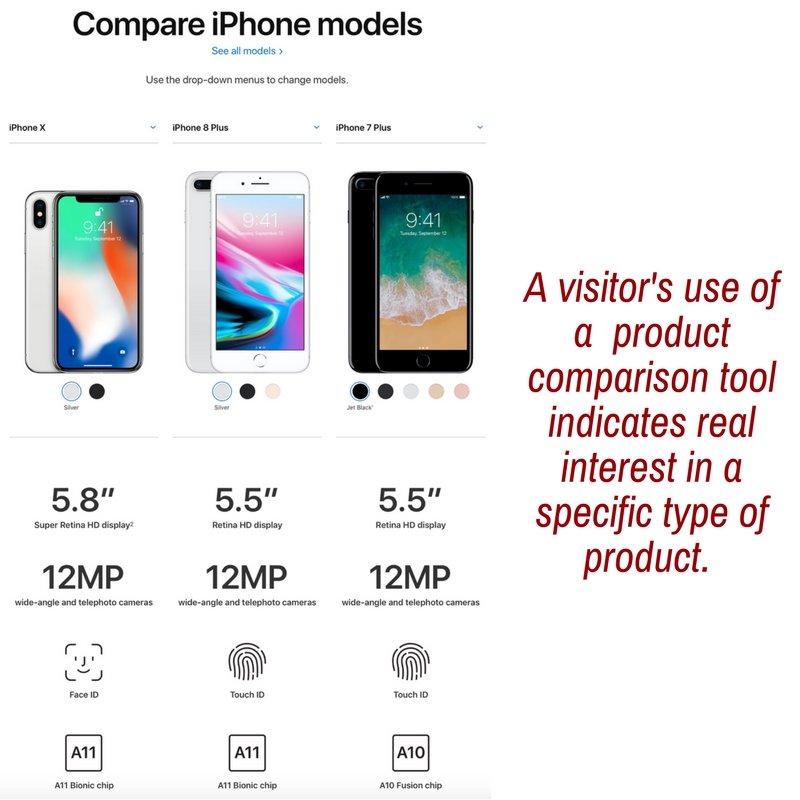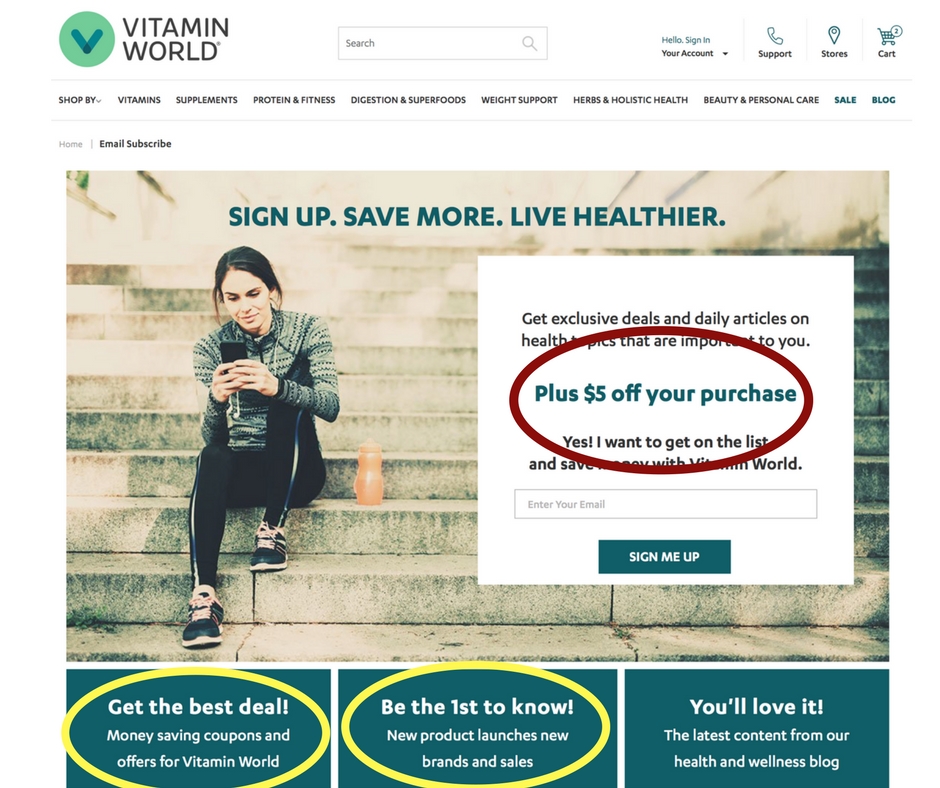Most visitors to an online store aren’t ready to buy. That’s where micro conversions come into play. They help build the excitement and trust that shoppers need to make a purchase.
Micro conversions are smaller actions that indicate a visitor’s interest in what you sell or have to say. They’re important building blocks for branding, sales, and overall customer loyalty.
Visitors to an ecommerce home page leave, browse, or search. Ideally, they’ll navigate to a product page and add an item to the cart. Here’s a basic overview of what happens, assuming that 100 percent of the visitors start at the home page of the store for each session.

A natural progression for buyers on an ecommerce site could be (a) home page, (b) then browse or search, (c) then product page, (d) then shopping cart, (e) then checkout, and (d) complete purchase.
What happens to the visitors that do not complete a purchase — the other 98 percent, above? Many leave and never return. Some will research at other sites and return to purchase from yours. Some may bookmark or favorite a product, with the intent to purchase when funds become available. What happens exactly, though, relies on whether or not you encourage micro conversions that give people reason to come back.
Types of micro conversions include:
- Signing up for an email newsletter. Email remains one of the best ways to stay in touch with shoppers and build lasting relationships.
- Searching for products or ideas. The use of site search indicates interest. Search results determine the next course of action.
- Sharing products or content via email or social media. People like to share what they love.
- Watching video. Time is valuable. Shoppers that spend time watching your videos are likely interested in your products.
- Creating an account. Creating an optional account indicates the desire to save items to a list or purchase in the near future.
- Adding products to wish lists or registries. This could indicate an intent to purchase products or to share with others.
- Using interactive tools. Using product comparison tools or entering personal details to see specific recommendations are meaningful.
- Downloading content, such as an ebook or instruction sheet.
- Contacting your company, especially by filling out an online form.

A product comparison tool helps visitors find the product best suited for their needs. Source: Apple.
Shoppers can carry out all of the actions above whether or not they make a purchase. Thus it’s important to measure those actions. Some can trigger purchases. For example, a visitor who shares a product on Facebook may result in new, immediate buyers.
Using Micro Conversions
When analyzing micro conversions, track what a visitor does immediately afterward. This tells you more about the visitor’s intent. It can also help identify problems.
For instance, if a visitor clicks the “Add to Wish List” button and then leaves without actually adding a product, this could mean there is a problem with the feature or the visitor has difficulty using it. Understanding intent and fixing potential problems is the first step in benefitting from micro conversions.
Consider the following ideas to encourage micro conversions.
- Offering something of value in exchange for an email address. This could be coupons, access to special products, exclusive membership discounts, content downloads, or personalized content.
Vitamin World, for example, offers new email subscribers $5 off a purchase, coupons, and alerts to new products and sales.

Vitamin World offers an instant $5 upon and other incentives for signing up to its email newsletter.
- Additional contest entries for specific actions. Hosting a sweepstakes-style contest for cash or prizes? Offer bonus entries for sharing across social networks or completing certain tasks on the website.
- Produce and host short and compelling videos. Videos should last about one minute or less. The more emotion they evoke, the more likely they will be shared. Take advantage of video tagging and linking, too.
- Display recommendations after various actions. Product recommendations that are personalized convert the best. Display personalized recommendations after visitors run searches, add items to lists, create accounts, and share content.
- Offer relevant or alternative product comparisons. What happens if a visitor isn’t thrilled with the features of two or more compared products? Provide info on running additional comparisons, as well as links to a few related items.
- Respond to contact requests quickly. Fewer people take time to reach out for information. Don’t delay getting them what they need.